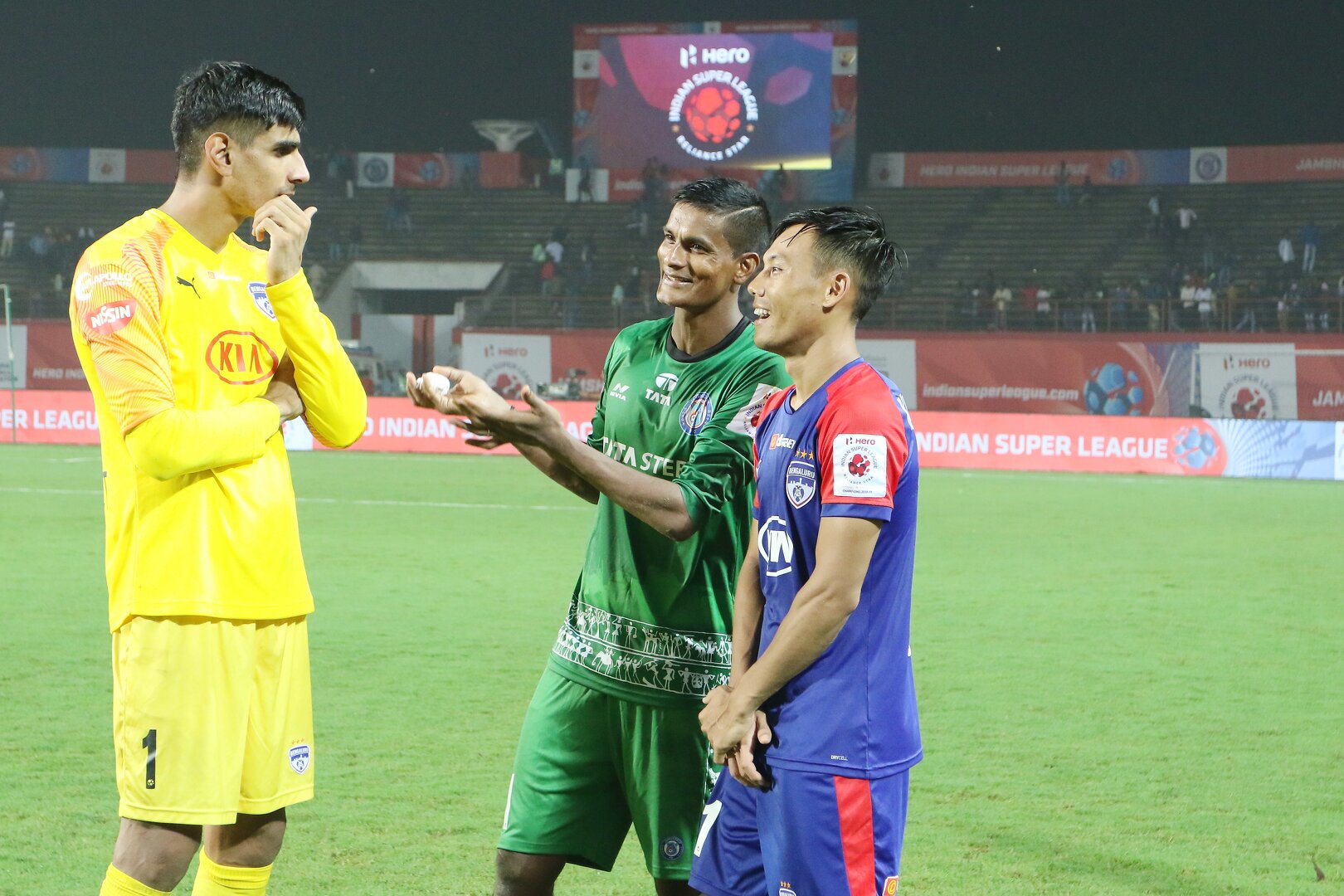The forgotten keepers: Why India’s goalkeeping talent needs attention

The underappreciated spine of Indian football team.
While strikers and midfielders often steal the headlines in Indian football, it’s the goalkeepers who remain its most underappreciated assets. Despite producing legendary figures like Peter Thangaraj, Subrata Pal and Gurpreet Singh Sandhu, India’s approach to developing and recognising goalkeeping talent has remained surprisingly stagnant.
Across the Indian Super League (ISL) and I-League, promising young keepers struggle not only for minutes but also for long-term development plans tailored to their unique positional needs. It’s a position that demands reflexes, psychology, and leadership—yet often receives the least structural support.
From school tournaments to national sidelines
The journey of a goalkeeper in India typically begins at school tournaments or district leagues, where the tallest kid is often thrown between the sticks by default. This arbitrary selection process—rather than one based on skill or passion—sets the tone for how little attention the position receives early on.
In many grassroots coaching setups, goalkeeping training is rudimentary at best. Coaches focus on outfield tactics, drills, and formations, with goalkeepers relegated to the role of practice targets. Without specialised guidance, many promising talents are left to self-train or mimic what they see in international broadcasts.
This has created a gap: young goalkeepers may have raw potential, but lack the technical and psychological tools to transition to the elite level. For comparison, countries with consistent goalkeeping pipelines—like Japan or Iran—invest early and consistently in position-specific mentoring.
Clubs caught between potential and pressure
Indian clubs are increasingly under pressure to deliver results quickly, particularly in the ISL where short seasons and high expectations leave little room for experimental lineups. As a result, coaches often default to foreign keepers or rely on seasoned Indian veterans rather than risk untested youth prospects.
The result is a bottleneck: promising under-20 and under-23 goalkeepers spend seasons on the bench, missing out on crucial match experience during their peak development years. Unlike outfield players who can be rotated in late-game scenarios, goalkeepers rarely get that chance.
Interestingly, data from sites like https://footyguru365.com/ reflects this imbalance. Match statistics show that a majority of Indian clubs have rotated forwards and midfielders more frequently than goalkeepers, with several clubs using just one starting keeper across entire seasons. This may ensure stability but hampers opportunities for emerging players in that position.
Mental strength, undertrained
The psychological aspect of goalkeeping is often ignored in India’s football training culture. A striker may miss three chances and still score the winner. A keeper, however, must live with a single mistake deciding a match. Yet little formal attention is given to mental resilience, composure under pressure, or recovery from failure.
Few clubs employ dedicated sports psychologists, and even fewer focus on position-specific mental training. This leaves young Indian goalkeepers vulnerable not just to criticism but to self-doubt—especially when their rare opportunities are defined by small margins.
When mistakes are magnified by fans or pundits, the lack of support systems often forces young keepers out of the sport altogether, or at least out of top-tier contention.
Lessons from India’s own past
India doesn’t lack goalkeeping role models. Subrata Pal’s performances at the 2011 AFC Asian Cup earned him global recognition. Gurpreet Singh Sandhu became the first Indian to play in a UEFA Europa League qualifier during his time in Norway. Arindam Bhattacharja and Amrinder Singh have been consistent domestic performers. But their rise is more exception than rule.
What these players share is persistence, but also luck—right coaches at the right time, or systems that allowed them to fail without being discarded. Replicating their success requires institutional change, not just individual brilliance.
Building a better pipeline
The AIFF and state associations have taken steps in recent years to host more age-group competitions and training camps. But unless these include serious goalkeeper scouting and mentoring, the structural imbalance will persist.
Specialised goalkeeper academies, foreign coaching exchanges, and psychological conditioning need to become standard, not optional. Clubs must also be incentivised—possibly through developmental league mandates or cap exceptions—to field U-21 Indian keepers during domestic games.
Finally, the media and fan culture around Indian football can evolve to better appreciate the nuances of the goalkeeping role. Recognition drives respect, and respect fuels investment—in both time and talent.
India’s footballing future will depend not only on the goals scored, but on those saved. For that, the keepers need more than gloves—they need a system that finally sees them.
For more updates, follow Khel Now on Facebook, Twitter, Instagram, Youtube; download the Khel Now Android App or IOS App and join our community on Whatsapp & Telegram.
- Ivory Coast vs Cameroon: Live streaming, TV channel, kick-off time & where to watch AFCON 2025
- Algeria vs Burkina Faso: Live streaming, TV channel, kick-off time & where to watch AFCON 2025
- Benin vs Senegal Preview, prediction, lineups, betting tips & odds | AFCON 2025
- Uganda vs Nigeria Preview, prediction, lineups, betting tips & odds | AFCON 2025
- Tanzania vs Tunisia Preview, prediction, lineups, betting tips & odds | AFCON 2025
- Top six quickest players to reach 100 Bundesliga goal contributions; Kane, Aubameyang & more
- Top three highest goalscorers in French football history; Kylian Mbappe & more
- With ₹19.89 crore bank balance; AIFF & Indian football standing on edge of financial collapse?
- AFCON 2025: All nations' squad list for Morocco
- Zlatan Ibrahimović names one of Lionel Messi’s sons as his “heir”